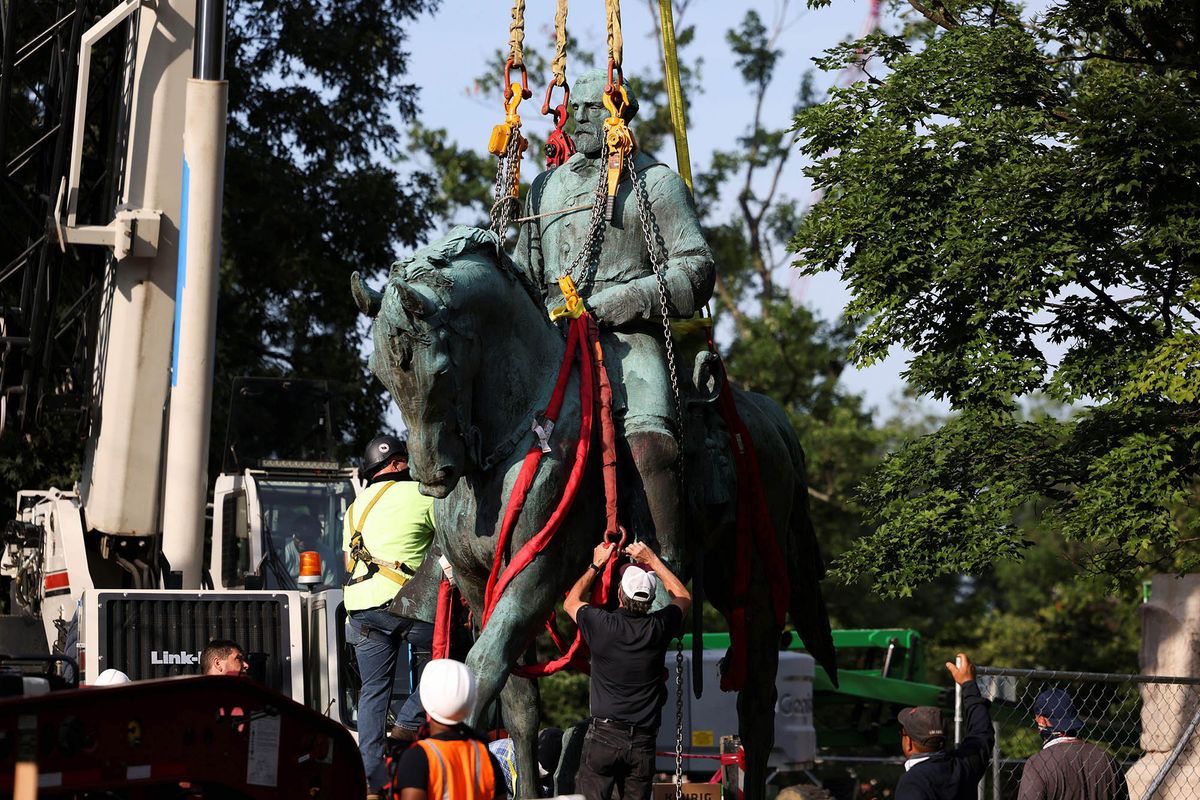A lawsuit brought by two organisations seeking to block a museum from melting down the equestrian statue of Confederate general Robert E. Lee that was at the centre of the deadly 2017 rally of white supremacists in Charlottesville, Virginia, has been largely dismissed.
Last week, a judge dismissed the principal elements of a lawsuit brought by the Trevilian Station Battlefield Foundation and the Ratcliffe Foundation, which manage a Civil War battlefield and a history museum, respectively. Both had submitted bids of their own for repurposing the Lee statue.
The Trevilian Station Battlefield Foundation and the Ratcliffe Foundation were seeking to prevent Jefferson School African American Heritage Center (JSAAHC) from carrying out its plan to melt the Lee statue down and turn it into a new public art piece. In December 2021, the Charlottesville city council chose JSAAHC’s plan unanimously as the winning proposal for making use of the controversial monument.
“The lawsuit has always felt like an attempt to create a distraction from the overall project,” Andrea Douglas, the JSAAHC’s executive director, told The Washington Post. “Our goal really is to engage in a conversation about public space—and how one makes those public spaces in the most democratic way possible.”
The Ratcliffe Foundation’s proposal involved relocating the Lee statue and another monument depicting Confederate general Stonewall Jackson to “an outdoor driving museum” in Russell County, Virginia, to be created near the Ellenbrook Museum, a historic home and estate the foundation operates, and which belonged to Confederate general JEB Stuart. Last May, a judge removed the Ratcliffe Foundation from the case because its corporate status in Virginia had expired.
Ruling last week, Charlottesville Circuit Court Judge Paul M. Peatross Jr. found that Trevilian Station Battlefield Foundation lacked standing to sue the city of Charlottesville because its own bid for the Lee statue had been submitted after the deadline.
The judge said that the Trevilian Station Battlefield Foundation can still sue the city over claims that it violated laws around open access to municipal records and Virginia’s Freedom of Information Act.
The 1,100lb statue, which depicts Lee atop his horse Traveler, was commissioned in 1917 from American sculptor Henry Shrady and, following his death, completed by Italian sculptor Leo Lentelli. It was dedicated in 1924. Following the June 2015 mass shooting at Emanuel African Methodist Episcopal Church in Charleston, South Carolina, in which white supremacist Dylan Roof murdered nine Black people, decades-long campaigns to remove monuments to and names of Confederate figures from public spaces gained new urgency and momentum.
In early 2017, Charlottesville’s city council voted 3-2 in favour of removing the Lee statue, though its removal was blocked by a lawsuit and an injunction. In August of that year, white supremacists organised the “Unite the Right” rally in part to protest the statue’s removal. During that rally and the counterprotests, a white supremacist drove his car into a crowd of protesters, injuring dozens and killing Heather Heyer. Shortly thereafter, the statue was shrouded in a black tarpaulin. On 10 July 2021, the city’s Lee and Jackson statues were removed.


